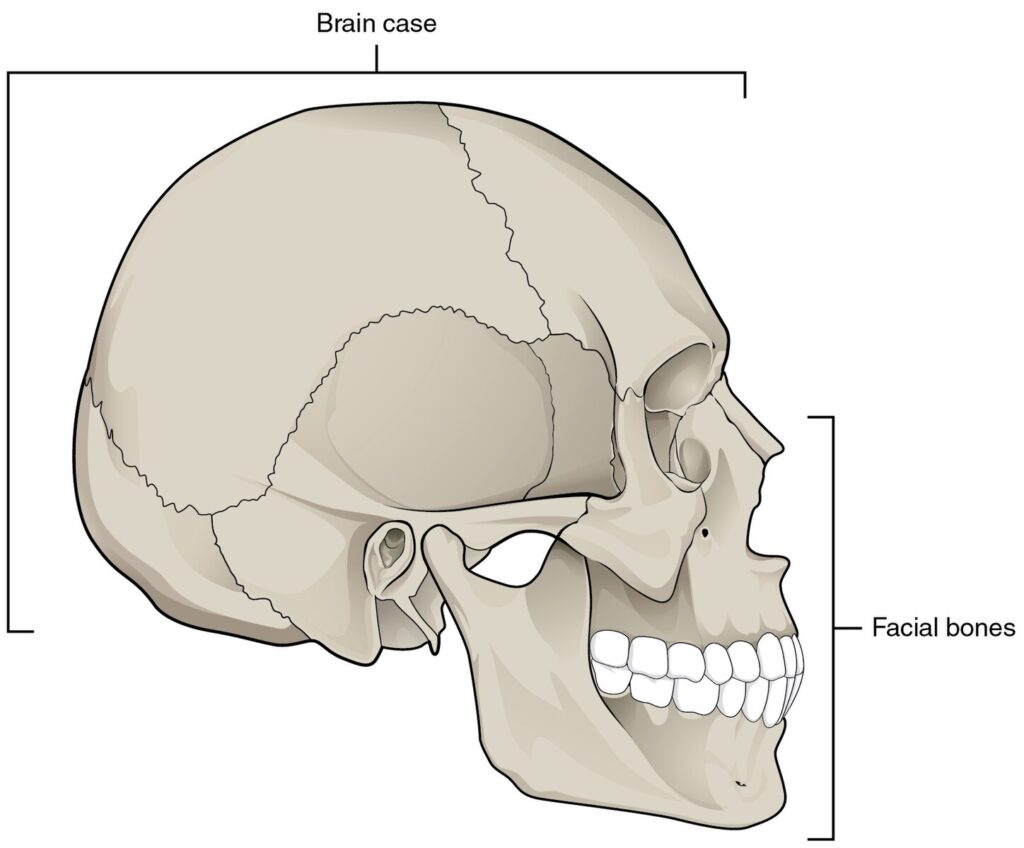Now Reading: Blood Stain Pattern Analysis in Forensic Science
-
01
Blood Stain Pattern Analysis in Forensic Science

Blood Stain Pattern Analysis in Forensic Science
Bloodstain Pattern Analysis (BPA) is a key area of forensic science that combines principles from physics, biology, and mathematics to study how blood behaves at crime scenes. By examining the shape, size, and distribution of bloodstains, investigators can piece together how violent events unfolded, where victims and suspects were positioned, and the sequence of actions that took place. BPA is based on the idea that blood follows predictable scientific laws and that its patterns can reveal valuable information about the events that caused them.
Bloodstains are generally classified into three main categories: passive stains, which result from gravity; transfer stains, which occur when a bloody surface comes into contact with another surface; and projected or impact stains, which form when blood is subjected to force. Recent developments have introduced advanced tools into the field, including computational fluid dynamics modelling, 3D crime scene reconstruction, AI-driven pattern analysis, and spectroscopic methods for estimating blood age.
Despite these advances, BPA continues to face challenges related to standardisation, interpretation, and reliability. While it remains an important tool for reconstructing crimes and supporting or challenging witness accounts, researchers and forensic experts have raised valid concerns about its subjectivity and limitations. This article explores the scientific principles behind BPA, reviews its classification systems, highlights emerging technologies, and discusses both its practical applications and the ongoing debates surrounding its accuracy and consistency in modern forensic investigations.
Keywords: Bloodstain pattern analysis, Forensic crime scene reconstruction, Blood spatter mechanics, Forensic serology, Crime scene interpretation
Bloodstain Pattern Analysis (BPA) is a forensic discipline that turns messy blood evidence into a story of the crime. Trained analysts study the size, shape, and distribution of bloodstains to infer what happened, answering questions such as: where did the blood originate, what weapons were used, and how were people positioned during the attack. In essence, BPA treats blood as a physical record of events. Because blood obeys laws of physics – gravity, inertia, surface tension – it doesn’t land randomly. Investigators use BPA to reconstruct crime scenes, verify or refute witness statements, and even distinguish homicides from suicides or accidents. By recognising and categorising patterns – for instance, matching droplets to possible trajectories – experts can piece together the sequence of events after bloodshed.
Principles and Physical Properties of Blood
Blood behaves like any other fluid under physics. Its droplets tend to form near-perfect spheres in flight because of surface tension. Surface tension (cohesive forces acting on the liquid’s “skin”) makes fresh blood drops round, and a smooth, hard target preserves that round shape. Rough or absorbent surfaces (like carpet or fabric) will break or flatten the droplet, which analysts must account for. In practical terms, this means a drop falling from a higher point generally makes a larger stain on impact. For example, one forensic guide notes that both gravity and surface tension “guide the recreation of a crime”: higher drops spread out more, and droplets expand predictably as they travel.
Blood’s composition also influences patterns. It is about 55% plasma (fluid) and 45% cells and proteins. When inside the body, it flows freely, but once it exits, it quickly begins to clot. Except in patients with clotting disorders, blood starts to gel within minutes of exposure. Early in an assault, a wound may drip liquid blood, but after a few minutes, the same bleeding would yield dark, jelly-like clots. Noticing clots in a stain can tell investigators that the injury was ongoing or that bleeding occurred over time. BPA also relies on blood’s capillary action: thin films or trails can wick along surfaces or fabrics, a detail experts use when examining smeared or transfer patterns.
Classification of Bloodstain Patterns
Crime scene analysts sort blood evidence into three main categories based on how it was deposited. Each category offers different clues:
- Passive stains: These occur under gravity alone – think of simple drops, flows or pools of blood. For example, blood dripping from a stationary wound or over a surface will create roughly circular stains. Passive patterns (drops, flows, pools) tell us about the bleeding source’s location and motionless posture.
- Transfer stains: These form when a bloodied object or body part comes into contact with another surface. Examples include a bloody handprint, footprint, or a smudge left by dragging a victim. Transfer patterns often carry identifiable shapes (a shoe sole or fabric imprint) that link a person or object to the blood. They also reveal post-incident activity – for instance, a drag mark might show that a body was moved after bleeding.
- Projected/Impact stains: Blood that is propelled by force creates spatter patterns. When a force – such as a punch, stabbing, gunshot, or explosion – acts on liquid blood, it produces droplets that travel through the air and strike surfaces. Analysts further classify spatter by velocity: low-velocity spatters (e.g. from dripping blood) tend to be large (typically ≥4 mm); medium-velocity spatters (from blunt force or stabbing) produce medium-size drops (~1–4 mm); and high-velocity spatters (gunshots, high-powered impact) produce a fine mist of tiny drops (<1 mm). A related projected pattern is cast-off spatter, created when a bloodied object (such as a bat or knife) is swung; each swing flings blood in an arc. Investigators can read cast-off patterns (using droplet tails and arcs) to estimate the number and direction of blows that were applied.
By carefully classifying each stain, analysts reconstruct key details, such as identifying which wounds occurred first, the number of attackers involved, and the direction of movement. Voids (gaps in spatters) are also significant: a clear area in a dense spatter often means something was blocking the blood’s path. For example, if a chair was pushed aside after blood fell, its previous position will show a void in the stain pattern. Such void patterns can reveal that an object or person was moved and even help place that item back in the scene if it is found later.
Advanced Methodologies and Technological Applications
Modern BPA is embracing new technologies to make analyses more objective and precise. One innovation is 3D crime scene reconstruction. Instead of sketching a scene on paper, investigators use laser scanners or photogrammetry to create detailed 3D point clouds of the scene. This lets analysts examine bloodstains from any angle and compute exact spatial relationships. In fact, a 2024 study found that presenting blood evidence in a 3D scanned model helped mock jurors remember details longer and better visualise the crime scene. In practice, 3D models can highlight voids and trajectories more clearly, aiding both investigators and fact-finders.
Computational Fluid Dynamics (CFD) is another cutting-edge tool. CFD utilises physics simulations to model the movement of droplets through air and their impact on surfaces. By inputting variables such as volume, speed, and angle, analysts can test different hypotheses about how a pattern was generated. Researchers argue that fluid-dynamics models should underpin BPA to reduce guesswork. For example, a forensic review paper by Attinger (2013) noted that many BPA assumptions are untested, and he proposed using rigorous fluid mechanics as a framework for validation. In effect, CFD can predict droplet trajectories, help estimate force magnitudes, and provide a scientific check against intuitive interpretations.
Spectroscopy and chemical methods are now being applied to BPA, particularly for estimating bloodstain age. Traditionally, it was very hard to tell how long blood had dried on a surface. Recent research shows promise: for instance, attenuated total reflectance Fourier-transform infrared (ATR FT-IR) spectroscopy can detect molecular changes in drying blood. In a 2024 study, chemometric analysis of ATR FT-IR spectra allowed scientists to predict the time since deposition of bloodstains over a 7-month period with high accuracy. (Other spectroscopic techniques, like Raman spectroscopy, are also being explored.) These methods could eventually give investigators a timeline of bleeding events, adding another layer of information to the pattern.
Finally, artificial intelligence (AI) and machine learning are showing great promise in BPA. Instead of relying purely on a human eye, AI systems can be trained on thousands of bloodstain images to recognise subtle features. Recent proof-of-concept studies have already achieved very high accuracy: one machine-learning model using XGBoost algorithms reached around 92–93% accuracy in classifying gunshot back-spatter versus impact spatter. These data-driven methods help reduce human bias and improve consistency. For example, AI can quickly measure stain shapes, count droplets, and even suggest likely blood-source points. As one analysis concludes, the “impressive classification accuracy” attained with machine learning underscores its huge potential for forensic pattern analysis. (Ongoing research is also applying AI to trace blood movements quantitatively and to automate stringing techniques for finding the point of origin.)
Applications in Crime Scene Investigation
BPA is a powerful tool for piecing together violent events. It answers many investigative questions:
- Reconstructing actions and positions: By tracing droplet paths and angles, analysts determine where the victim and assailant were located. For example, the convergence of blood trails can show the approximate location of the bleeding source in 3D space.
- Corroborating or refuting accounts: The pattern can confirm or contradict witness or suspect statements. If someone claims to have just been sitting still, yet the spatter suggests a struggle with moving blood flow, BPA can expose the discrepancy.
- Estimating numbers: Cast-off arcs or multiple spatter patterns can indicate the number of blows delivered or projectiles fired (since each swing or shot makes its own pattern).
- Guiding evidence collection: Blood trails and spatter gradients often point to additional evidence locations. For instance, a bloody footprint might mark where a suspect walked, guiding targeted DNA swabbing. Analysts can map out high-probability zones for finding shed skin cells or other trace evidence.
- Distinguishing crime types: Different circumstances leave different patterns. BPA can help tell apart a self-inflicted wound from an assault or an accident. The absence or presence of certain stains, and their context, support classifying the death as homicide, suicide, or accident.
- Detecting staged scenes: Anomalies like perfectly round voids or impossible trajectories often signal tampering. For example, if blood spatters perfectly outline an empty space where a piece of furniture is later found, it suggests the furniture was moved (and blood would have landed on it). Analysts use such void patterns to uncover deliberate scene alteration.
In these ways, BPA narrows suspect pools and builds an evidentiary picture. By linking specific stains to specific actions (or objects), it can exclude inconsistent narratives and strengthen the physical evidence base. Investigators often note that even a single correctly interpreted bloodstain pattern can dramatically change the understanding of a case.
Limitations and Challenges
Despite its utility, bloodstain pattern analysis has well-known limitations. A major concern is subjectivity and uncertainty. The National Academy of Sciences (NAS) warned in 2009 that BPA interpretations involve “enormous” uncertainties and often rely more on judgment than on validated science. In practice, studies have found that different analysts examining the same scene can reach conflicting conclusions. Even experienced experts sometimes overstate how precise their findings are. Without strict quantitative standards, judgments about patterns can vary greatly from one practitioner to another.
Environmental factors further complicate things. Conditions at the scene – the texture and absorbency of surfaces, room airflow, temperature and humidity – all affect blood’s behaviour. For instance, HowStuffWorks notes that a drop hitting carpet will “spread” and lose its round shape, whereas the same drop on tile stays circular. Similarly, wind or a moving fan could skew droplet paths. Blood viscosity and clotting add more variables: thicker (coagulating) blood forms different droplets than fresh liquid. In short, “a million little things” can distort a pattern, and analysts must guess at many of those factors when reconstructing a scene.
Another challenge is the lack of standardization. While researchers have proposed classification schemes, there is no universally accepted protocol. Analysts often describe patterns by how they think they were formed (e.g. “arterial gush” vs. “impact spatter”) rather than by purely observable metrics, making consistency difficult. A 2021 survey found that even trained BPA experts frequently disagreed when asked to interpret the same sets of stains, underscoring this subjectivity. In short, two analysts might watch the same video or photo of spatter and come up with different crime scenarios.
Despite advanced tools (3D mapping, CFD, AI) that are making BPA more quantitative, the field still needs rigorous validation. Ongoing research aims to test basic assumptions under controlled conditions, but forensic scientists caution that BPA results should always be presented with clear limitations. In court, experts are now encouraged to speak in probabilities, not certainties. The bottom line is that BPA can suggest what is likely, but it cannot prove a narrative beyond doubt on its own.
Conclusion
Bloodstain pattern analysis remains a crucial, though complex, forensic tool. By combining biology, physics and even math, BPA can turn chaotic splatters into insights about a crime. Modern innovations – from 3D scene modelling to fluid dynamics and AI-driven image analysis – are making BPA more precise and less reliant on gut instinct. At the same time, the discipline is painfully aware of its limitations. There is a strong push for standardised methods, objective criteria, and open communication about uncertainty. When used responsibly and alongside other evidence, BPA helps investigators retrace violent events and build more complete case narratives. In the end, analysts emphasise that bloodstains “never lie” – but interpreting them requires both scientific rigour and thoughtful caution.










